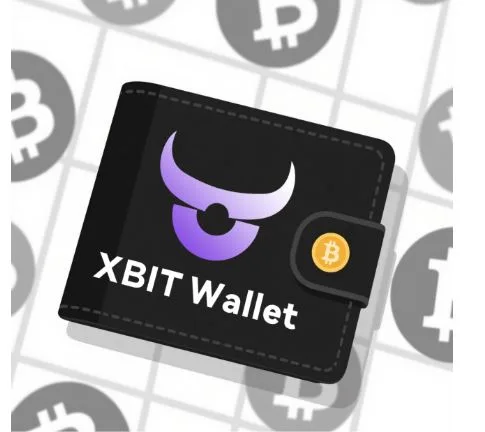AMIDST DIGITAL ASSET VOLATILITY, USDT WALLETS AND XBIT WALLET COLLABORATE TO BUILD A CORNERSTONE OF THE CRYPTO WORLD AND EXPLORE SAFE HAVENS
XBIT Wallet reported on October 15th that the cryptocurrency market has once again become a hot topic. On one hand, Bitcoin’s price broke through the 113,000 USDT mark. Despite a narrowed 24-hour decline of 1.70%, overall market sentiment remains buoyant. On the other hand, the news that mining company MARA received 400 BTC (worth approximately $45.24 million) from Galaxy Digital highlights the continued interest of institutional investors in digital assets. Meanwhile, hardware wallets like the Ledger Nano S Plus are on sale for $59 on Amazon, and Xenea Wallet is launching a daily quiz to earn tokens, reflecting the diversification of cryptocurrency storage and yield opportunities. However, the incident on the Lighter platform where the YZY emoji coinbase, resulting in over $143,000 in bad debt due to forced liquidations and a short squeeze, serves as a reminder that while pursuing high returns, secure asset storage and management are crucial. This article will focus on USDT wallets and explore how to protect your digital wealth in volatile markets with reliable solutions like XBIT Wallet.
Asset Security Challenges Amid Market Volatility
The surge in Bitcoin prices and active institutional trading undoubtedly present opportunities for investors, but they also come with risks. For example, the YZY library on the Lighter platform faces the risk of running out of funds due to a failure to automatically deleverage. This serves as a reminder that leverage and improper storage in the crypto market can lead to significant losses. Hardware wallets like the Ledger Nano S Plus offer physical security, but their incompatibility with iOS may be inconvenient for some users. While Xenea Wallet’s gamified earning model appeals to newcomers, it can also lead to an overemphasis on short-term gains at the expense of long-term security.
Against this backdrop, USDT wallets, as a stablecoin storage tool, have become the preferred choice for many users to hedge against market volatility. USDT (Tether), pegged to the US dollar, has a relatively stable value and is commonly used for transactions, savings, and cross-border transfers. However, wallets storing USDT without robust security measures could expose user assets to hacking, private key loss, or platform failure. Therefore, choosing a wallet that is both secure and user-friendly is a top priority for every crypto user.
Core Wallet Functions and Private Key Knowledge: Building a Security Foundation
According to the XBIT Wallet app, a high-quality USDT wallet should possess multiple features, including multi-chain support, a user-friendly interface, backup mechanisms, and advanced encryption technology. For example, the XBIT Wallet decentralized web3 wallet not only supports USDT storage but also seamlessly connects with major cryptocurrencies like Bitcoin and Ethereum, allowing users to manage multiple assets on a single platform. Its core features include real-time transaction monitoring, cross-chain exchange, and decentralized application (dApp) integration, helping users quickly respond to market fluctuations.
However, the core of a wallet’s security lies in private key management. A private key is a string of numbers and letters that acts as a “digital signature” for your assets. It is generated by the wallet and used to sign transactions, proving ownership of your assets. Private keys are typically backed up using a mnemonic phrase (also known as a seed phrase), a sequence of 12 or 24 words. For example, hot wallets (such as mobile or desktop wallets) often use 12 mnemonics. These words represent a random combination generated by a cryptographic algorithm. Each word corresponds to a specific numeric value, which can be combined to recover the private key. This means that if you lose your device, you can recover your wallet and assets simply by using your recovery phrase.
When backing up your mnemonic phrase, be sure to follow these steps: First, when setting up your wallet, you will be prompted to write down the 12 words. Second, write these words down in order on paper and store them in a safe place (such as a safe deposit box). Avoid digital storage (such as screenshots or cloud storage) to prevent hackers from stealing them. Finally, never share your mnemonic phrase with anyone, as anyone who obtains it can control your assets. Knowledge of private keys is the cornerstone of the crypto world—it ensures decentralization and allows you to truly own your assets, rather than relying on a third-party institution.
Security Operation Experience and Risk Prevention
When operating a USDT wallet, users should take precautions based on market trends. For example, based on the Ledger hardware wallet promotion reported in the news, consider storing large amounts in a cold wallet (offline device) and using a hot wallet for small, daily transactions. The XBIT Wallet decentralized wallet, a web3 economic pass, is designed with this concept in mind, using a security chip and multi-signature technology to prevent unauthorized access. Furthermore, regularly updating wallet software, enabling two-factor authentication (2FA), and avoiding public Wi-Fi for transactions are all basic security practices. According to XBIT Wallet, market events like the YZY library’s bad debt issue serve as a warning against excessive leverage and blindly chasing high returns. When participating in quiz games like Xenea Wallet, ensure your wallet is secure enough to avoid significant losses. Remember, your private key is the only proof of your assets—once lost or compromised, recovery is nearly impossible. Therefore, while enjoying the dividends of the crypto economy, cultivating a strong security awareness is more important than pursuing short-term gains.
Conclusion: Navigating the Crypto World Steadily
Overall, with Bitcoin’s price volatility and increasing institutional activity, the role of the USDT wallet has become increasingly critical. It’s more than just a storage tool; it’s your gateway to participating in the Web3 economy. By gaining a deeper understanding of private keys and security practices, combined with platforms like the XBIT decentralized exchange, users can more confidently navigate market challenges. Ultimately, security isn’t an option, but a necessity—let’s use the knowledge and tools to build a solid defense against the digital tide.




